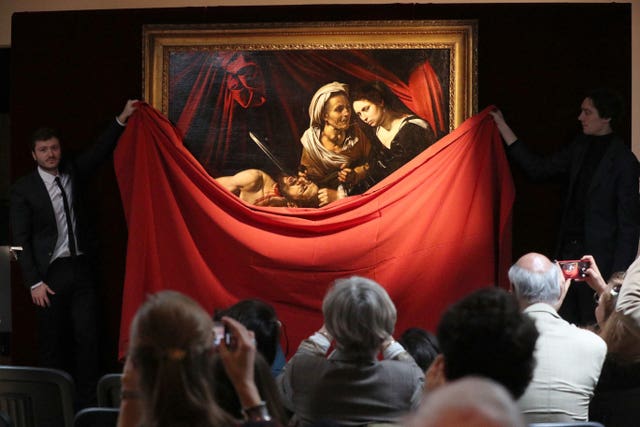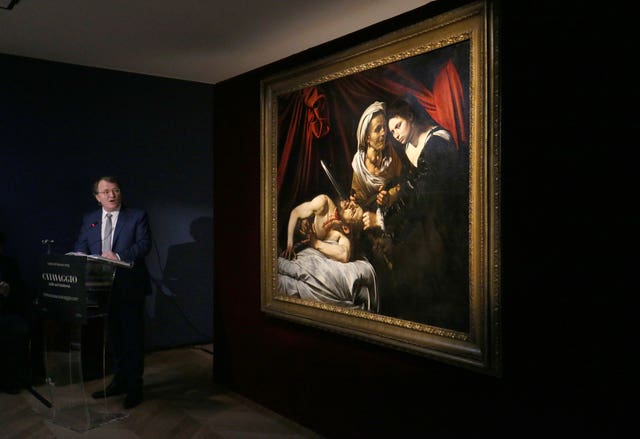
A long-lost painting by the artist Caravaggio was almost stolen by burglars years before it was rediscovered in an attic in Toulouse.
The work by the Italian master, found five years ago in a farmhouse in the French city, was unveiled on Thursday in London after being restored.
Burglars broke into the home and stole items including bottles of perfume but left the painting as they thought it worthless, according to auctioneer Marc Labarbe.

Titled Judith And Holofernes and valued at £129 million, the piece sat for a century in anonymity against a wall between old clothes, family antiques and crockery.
Speaking at the unveiling of the work at the Colnaghi gallery, Mr Labarbe joked the burglars had not deemed the painting “adequate” enough to steal it.
He said: “One of my clients was clearing his attic and he needed two men to help him. It took a year to sell all the antiquities.
“Clocks, toys, pieces of religion, in good and bad condition, clothes, crockery, as well as many things of no interest. Everything was very dusty.
“I have to tell you that a few years before, burglars broke into the attic and stole many things, included eau de parfum bottles.
“Fortunately, our painting was not adequate.”

He added: “On the 23rd of April 2014, late in the morning, my client called me again because he had found a painting and wanted my opinion on it.
“I went to his house and climbed the stairs to the landing of the attic where the painting was displayed.
“At this moment there was what was like a fog across the whole canvas.
“The painting was blurry and it was almost impossible to see the details, but I was impressed by the state of the composition.”
According to Paris-based art appraiser Eric Turquin, the work was painted in 1607.

It depicts the biblical tale of Judith, a widow from the city of Bethulia, who breaks the siege of her home by seducing the Assyrian leader and beheading him.
It will be sold without reserve on June 27 in Toulouse at the La Halle aux Grains, with Mr Labarbe saying: “This magnificent story began in Toulouse. It has to continue in Toulouse.”
The painting is Caravaggio’s second version of the same subject, with the first painted in Rome around 1600.
The discovery means there are now 68 known paintings attributed to the artist, who was born in 1571 and died in 1610 of suspected lead poisoning from his paint.
Judith And Holofernes will be on display at Colnaghi at 26 Bury Street from March 1 until March 9.


Comments: Our rules
We want our comments to be a lively and valuable part of our community - a place where readers can debate and engage with the most important local issues. The ability to comment on our stories is a privilege, not a right, however, and that privilege may be withdrawn if it is abused or misused.
Please report any comments that break our rules.
Read the rules here